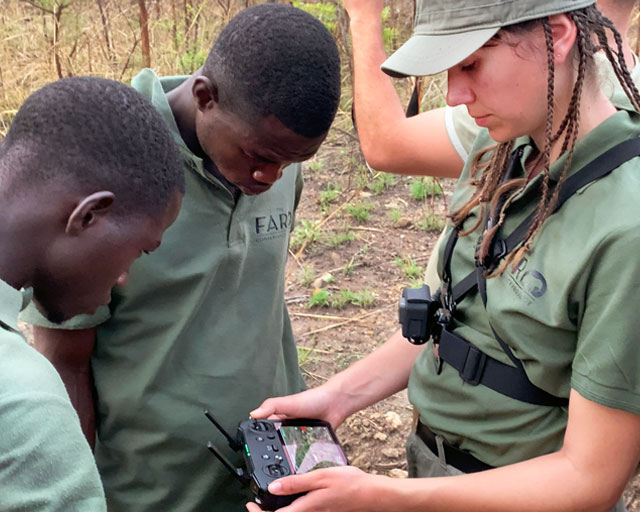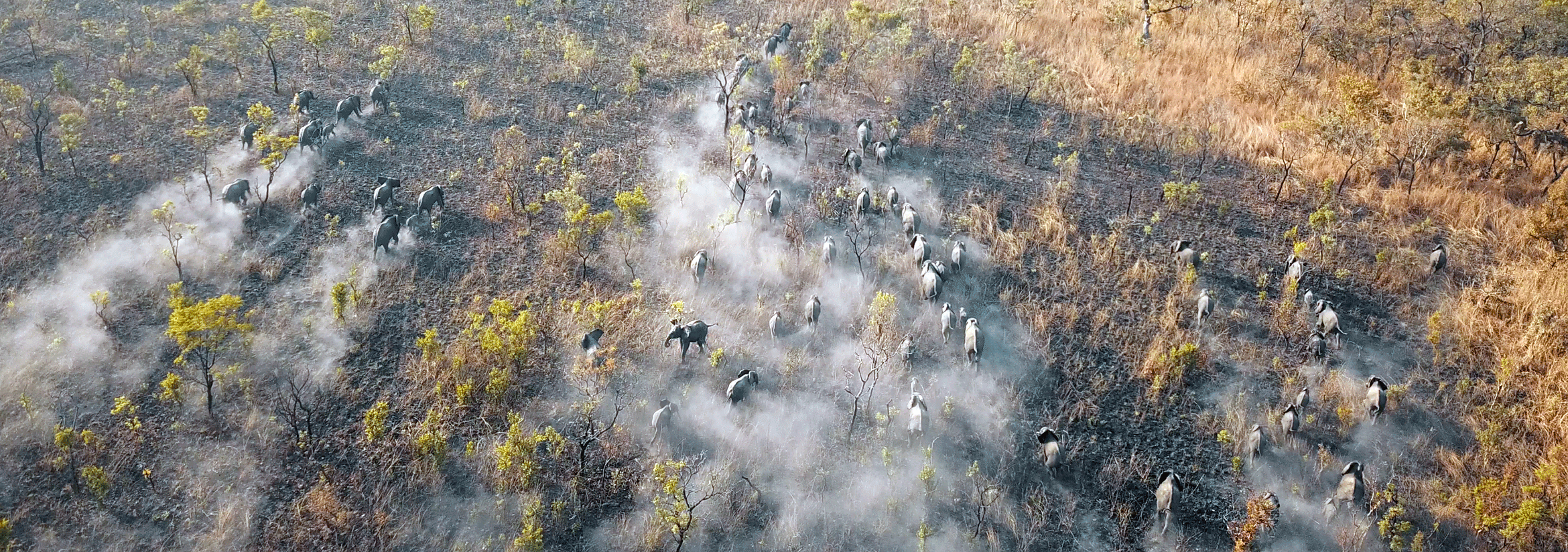
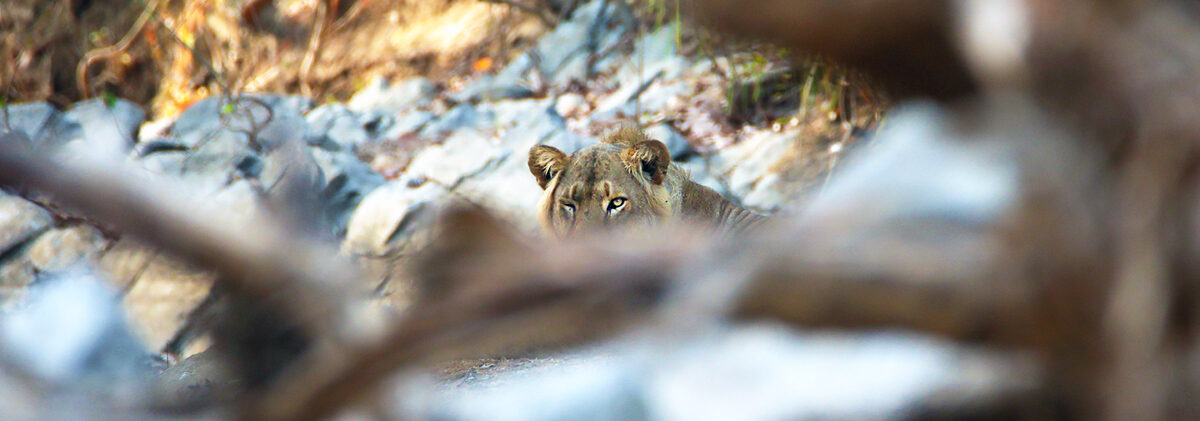
A PARADISE UNDER ATTACK
Text written by Stefano Badini Confalonieri, following his two consecutive “Conservation Trips” in 2022 & 2023. English arrangements made by Scott Engel.
In both 2022 and 2023, I was fortunate enough to observe large herds of Lord Derby eland trotting elegantly across the rolling savannahs of Northern Cameroon. The less shy Western kob allow themselves to be approached from fewer than ten meters when we observe them from the car. They raise their heads, observe, smell and listen, completely immersed in the ubiquity of the moment, where every second vibrates with its own energy.
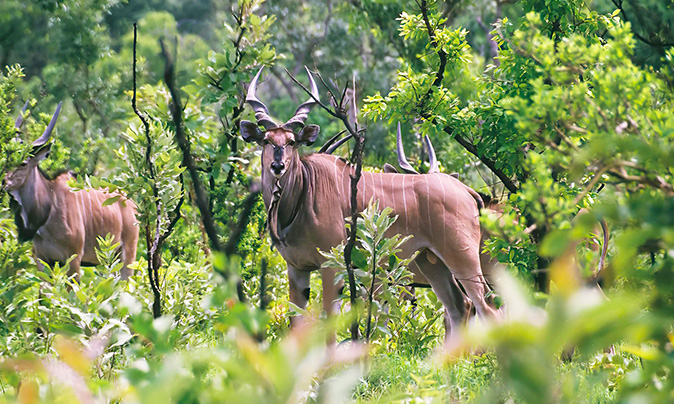
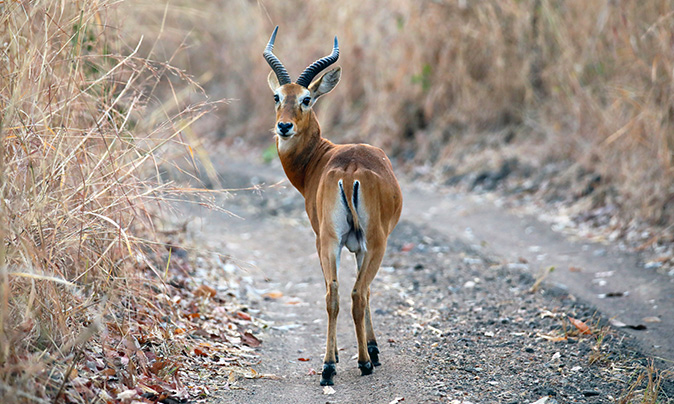
Protected area number 18, where I stayed, is one of 27 privately managed protected areas in the northern region of Cameroon. They are linked by three large national parks: Faro in the west, Benoue in the central sector and Bouba Ndjidda in the east. Two of these three large parks, classified as such during the post-war period, have very low wildlife densities. In the past, the Benoue was teeming with animals. There were even Western Black rhinoceroses, now extinct in Cameroon. The “Black buffalo” camp, once popular with tourists, sits abandoned. Nowadays, poaching and illegal pastoralism are among the most immediate threats to the survival of wild animals across their Northern Cameroon range.
A few decades ago there was continuity between the various protected areas. This enabled large nomadic animals such as elephants, eland and buffalo to migrate easily from one national border to the other and even to cross these man-made boundaries. Today, this continuum is broken and fragmented. To move around, migratory animals are forced to pass through areas inhabited by humans. As a result, many protected zones are a mere shadow of their former selves. Many animals, poached and under pressure, have deserted the areas. Others have disappeared entirely. Population growth in villages bordering the protected areas contribute directly and indirectly to the threats facing the remaining wildlife: poaching, soil degradation by the large Zebu cattle herds, and illegal gold mining are all threats to an endangered biodiversity. A few years ago, the presence in the bush of domestic dogs carrying distemper led to the disappearance of African wild dogs and continues to threaten the remaining hyenas and lions.
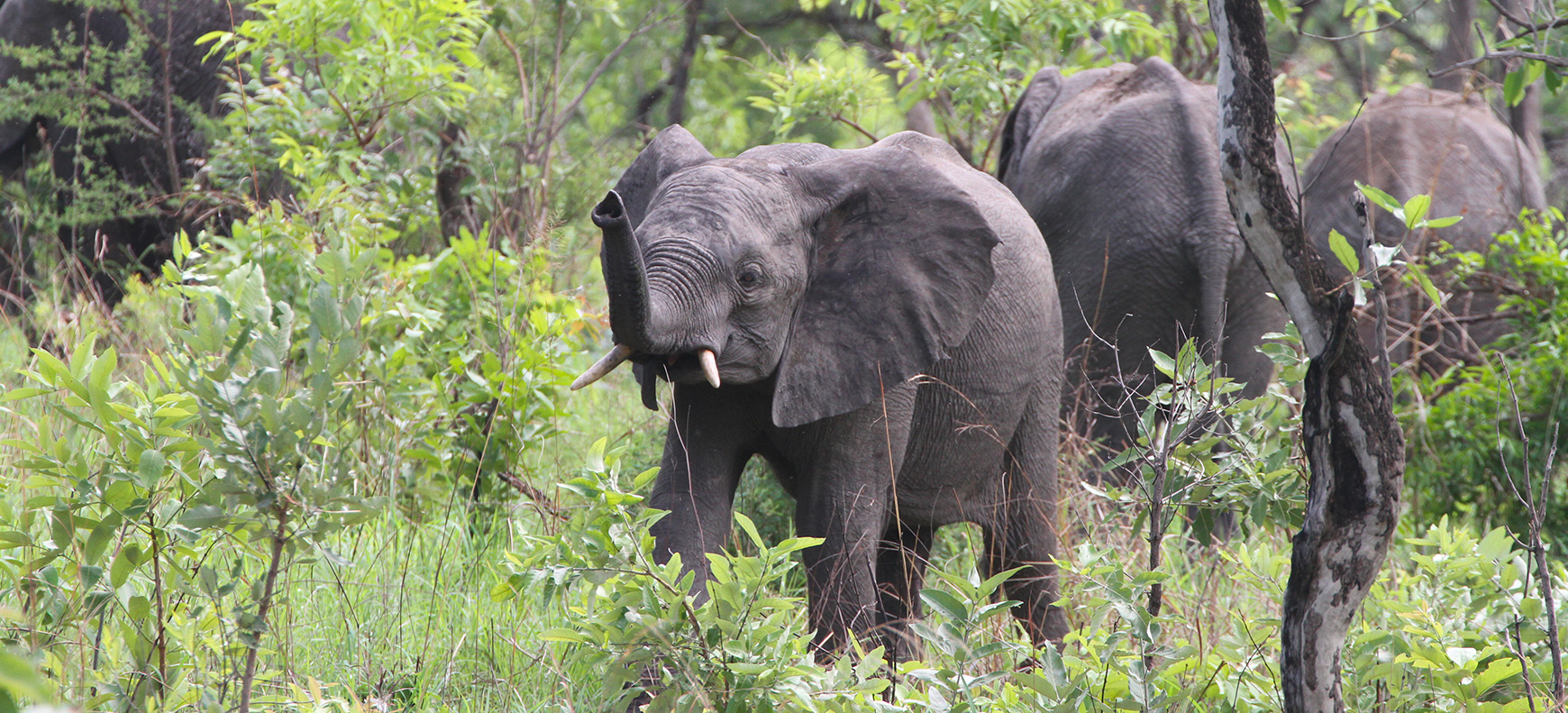
Against this threatening backdrop, a number of champions are emerging. Xavier Vannier, the third-generation manager of Protected Area 18 along with his father Frank, made the choice in 2016 to swap the cobblestones of Paris for the dirt roads of the Faro. Going deep into the Africa he has known since childhood was for him the continuation of an intermittent dream that he only lived during his limited stays in Cameroon. Shortly after starting out as a guide alongside his father, he felt that the conservation model needed to be renewed. Other ways and means had to be found to remunerate anti-poachers and maintain a vast area which, without human protection, would be ravaged in less than a decade. With this in mind, he created Conservation Trips, enabling travelers to discover the challenges of conservation by taking part in anti-poaching patrols, setting trail cameras and tracking wild animals.
Protected Area n18 is a “paradise under attack”, in the words of its ardent defender. To discover this paradise, I devoted myself to observing the landscape carefully and patiently. What struck me immediately was the singular beauty of each animal and its ability to blend into the natural environment. When I first saw Western Savannah buffalo, I was struck by their massive, muscular, powerful bodies. I let out an exclamation of surprise and followed Xavier out of the pick-up. We carefully approached to within twenty meters, hidden behind a termite mound. The two bovines in view raised their wet muzzles. With ears twitching, they winded us and began trotting away. “Wild animals run from human smell—they don’t like it”, Xavier explained to those of us in our group.
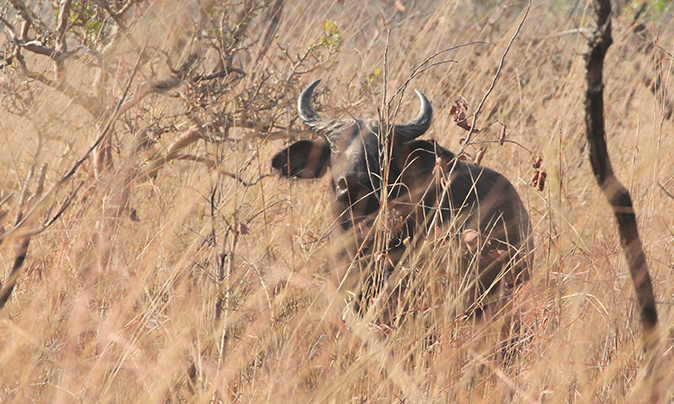
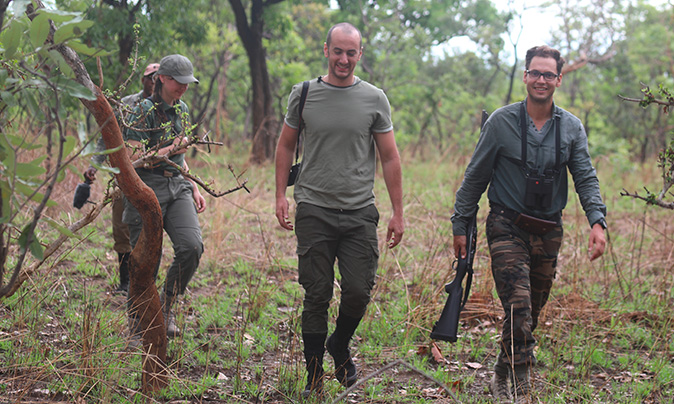
During one patrol, we spotted smoke. An alarm signal. Leaping from the pick-up, we set off in pursuit of a presumed poacher. In just a few minutes the anti-poaching team apprehended the illegal hunter and dragged him off in the direction of the nearest gendarmeriepost. He had lit a bushfire and then had hunkered down against the wind, waiting for the trapped animals to flee in his direction. With the help of his dog, he had caught up with a monitor lizard and speared it through the skull. I carried the now lifeless carrion by the tail and was surprised by the reptile’s heaviness. Its pasty tongue protruded from its mouth, inert, and its small black eyes no longer reflected any sparkle of life.

Majestic elephants can cover great distances in a short space of time. The joy of meeting them came to us after nine kilometers of tracking under the scorching sun. Half-hidden behind the foliage, the four pachyderms ate peacefully with their slow, circular movements; hypnotic, bewitching trumpets. When they finally caught sight of us, they sped off in the opposite direction. Xavier launched his drone which caught up with them in no time. As we watched on the remote-control screen, their long strides seemed to follow one another in slow motion.
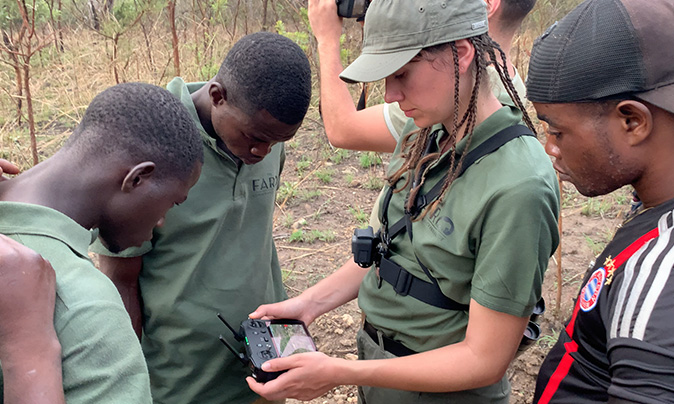
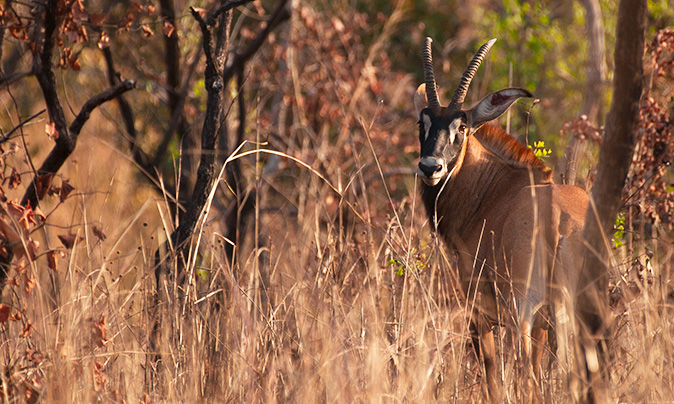
One late afternoon, we headed for a tributary of the Faro River in search of illegal gold miners. As we neared the stream, the vegetation grew denser. Hence, we redoubled our vigilance, moving forward in single file without exchanging a word. Behind every bush, tendril of foliage or tree trunk a dangerous animal could be lurking. The striking call of a Hadeda ibis sounded three times. It was a vibrant, mysterious call. Ahead of us, at the top of the bank, the grass was long and dry. Suddenly, a brisk movement shook the bush. A crocodile darted down the slope and plunged into the water. The splash echoed for a few moments in the musky dusk air.
We descended into the sandy riverbed, which had dried up during this, the dry season. We picked up discarded bottles of cheap whisky, signs of the passage of the illegal miners we sought and approached a pocket of water as large as a small swimming pool and partitioned at the back by rocks. Large bubbles revealed the submerged presence of a hippopotamus. We were exchanging pleasantries about the pachyderm when someone screamed. I rushed forward. I was the only one. It was a false alarm. “A joke”. My reaction amused everyone.
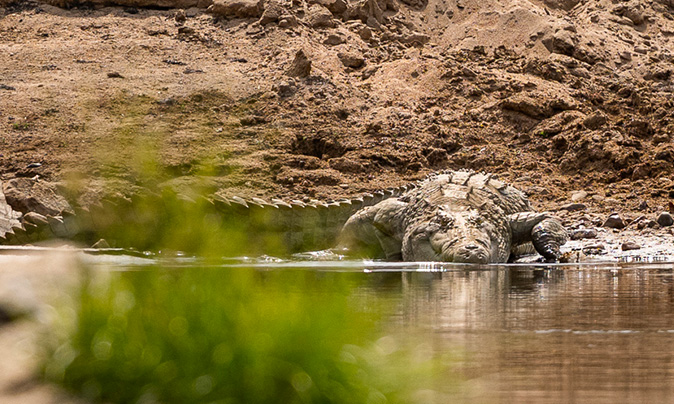
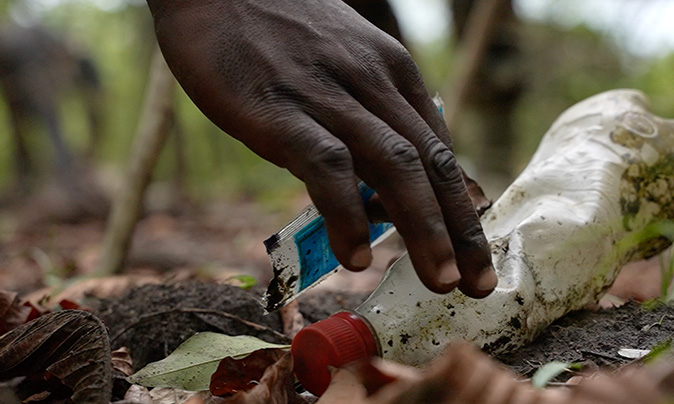
Finally, the colossal beast’s massive head split the dark surface of the water. His little circular ears twitched spontaneously. He stared at us with his furious eyes as he moved slowly forward. We froze. Suddenly, the animal accelerated and, in a fraction of a second, I saw its gigantic body emerge. This time it was no joke. Xavier yelled, “Go quickly!” It was like hitting a bees’ nest. Everyone scrambled to their feet. A jolt of adrenalin, like an electric shock, shot through me from head to toe. Death was here. Right on my heels. I ran for my life, scaled the sandbank, threw myself forward, stumbled and slumped face down. Terrified, I picked myself up and continued running, out of breath. At the end of my strength, I grabbed a helping hand and was hoisted onto a rock. The team joined me, all of us laughing in relief. Xavier, in a heroic gesture, had defied the beast. He had managed to stop it in its tracks by shouting and raising an arm above its head, ready to shoot it. It took me almost an hour to recover. I had never experienced such a mixture of dread and fascination; fear of death and admiration for the brute force of nature. I realized that I was just a tiny particle of this grandiose landscape.
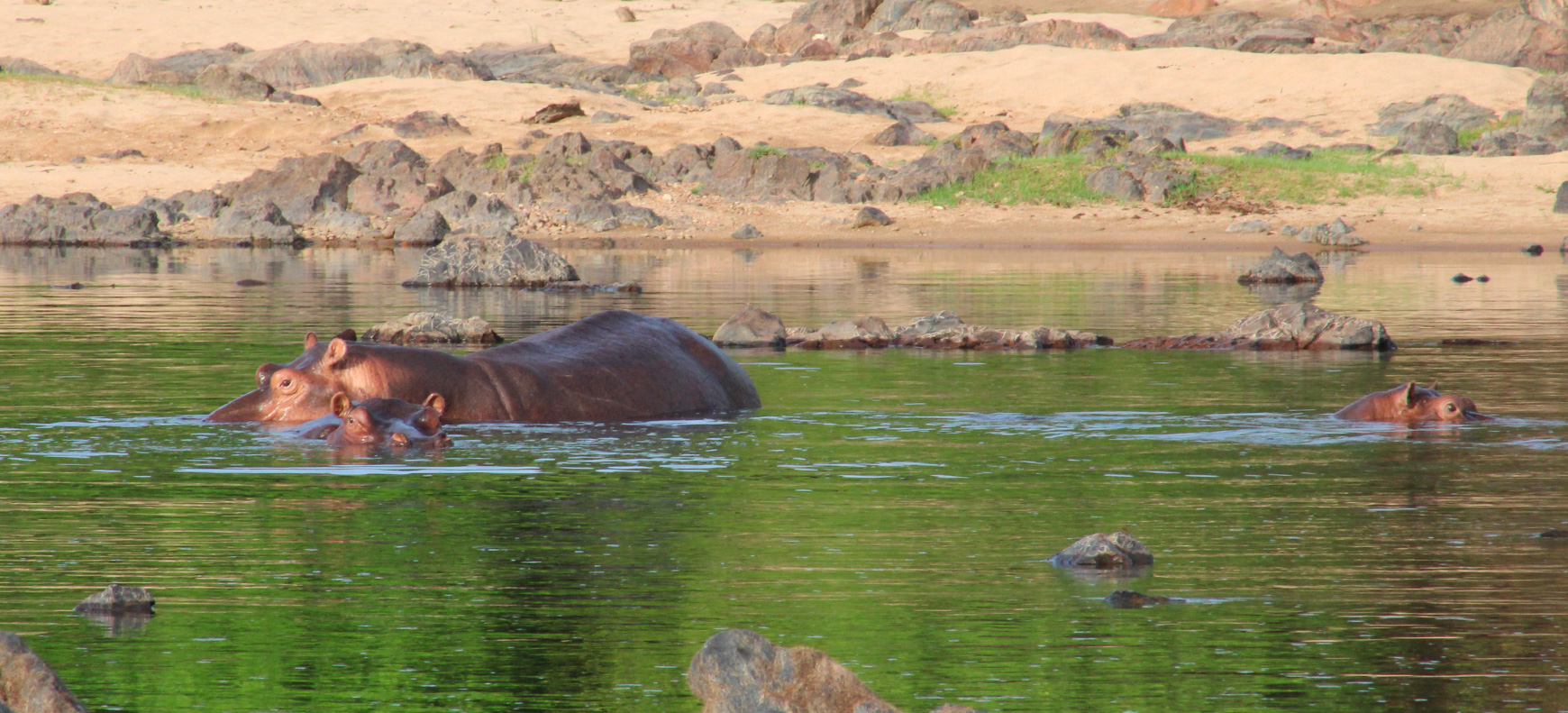
The week passed like an enchanted interlude in an idyllic bubble. And then it was time to leave. I’m not usually sad about departures, at least not at first, because I tell myself it’s better to be grateful rather than lacking, to be active rather than inactive. I bade farewell to the beauty of the Faro River in front of me, a few Western kob in the distance, then the team of anti-poachers and trackers with whom we take a ‘family’ photo. I don’t ask myself whether or not I want to stay at the camp as the question is pointless—I have to leave. So, all I can think about now is the sadness of leaving as I sit in the back of the pick-up. In the front, Xavier chats to another participant, Lorraine, about conservation issues as we’ve done for the past seven days. I can hear them, but my mind is elsewhere, far away in the bush that passes us by. Deep down, I feel a strong attraction to this place. I have grown to love it. In all my life I’ve never loved a place like this. And then there’s Xavier, the land-keeper, so admirable in his efforts to protect it. He loves it too.
I’m still pondering these emotions when I see something ahead of us, close to the dirt airstrip, on the right-hand side of road. Xavier, who has eagle eyes, hasn’t seen it yet. Nor has Lorraine. I alert them. We stop. It’s a young Western buffalo. He comes up to the car in a lateral trot, looking up at us with his shiny muzzle. He’s come to send us off. He’s come to remind me not to forget this vulnerable place. Like a wink, I perceive it as a tacit call for help. He needs us. They all need us.
I’m overcome with emotion as the buffalo trots off. Slowly, as if reluctantly, the pickup resumes its onward journey to Ngaoundere. I put on my sunglasses in order to hide my tears. This is indeed a “paradise under attack” and I’m left with a question: Who is going to protect this paradise so that it continues to exist? We all return to our villages and cities, to the “heart of civilization” as it were. And yet it’s there, so far removed from the earth’s wild places, that almost no one gives a damn about the survival or disappearance of wild animals at all, or worse yet they are uninformed and therefore misguided in their emotional attacks on those who steward these wild lands. The blindness is collective because the gaze is human-centric; I don’t blame them; I’ve just woken up myself.
It’s going to be a tough fight. The race against time is at hand.
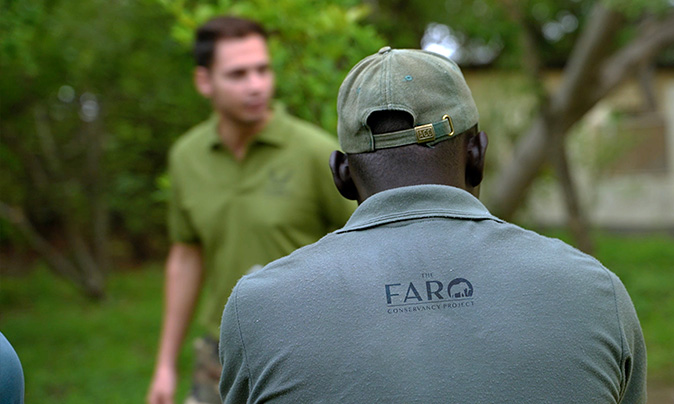
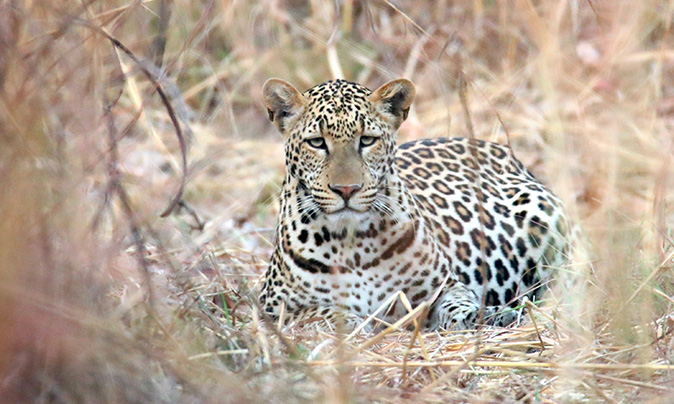
don’t hesitate to write to us or visit our website section here!
WHY THIS BLOG ?
STAY TUNED
Sign up to make sure to receive our latest news & articles.
JOIN THE FIGHT
